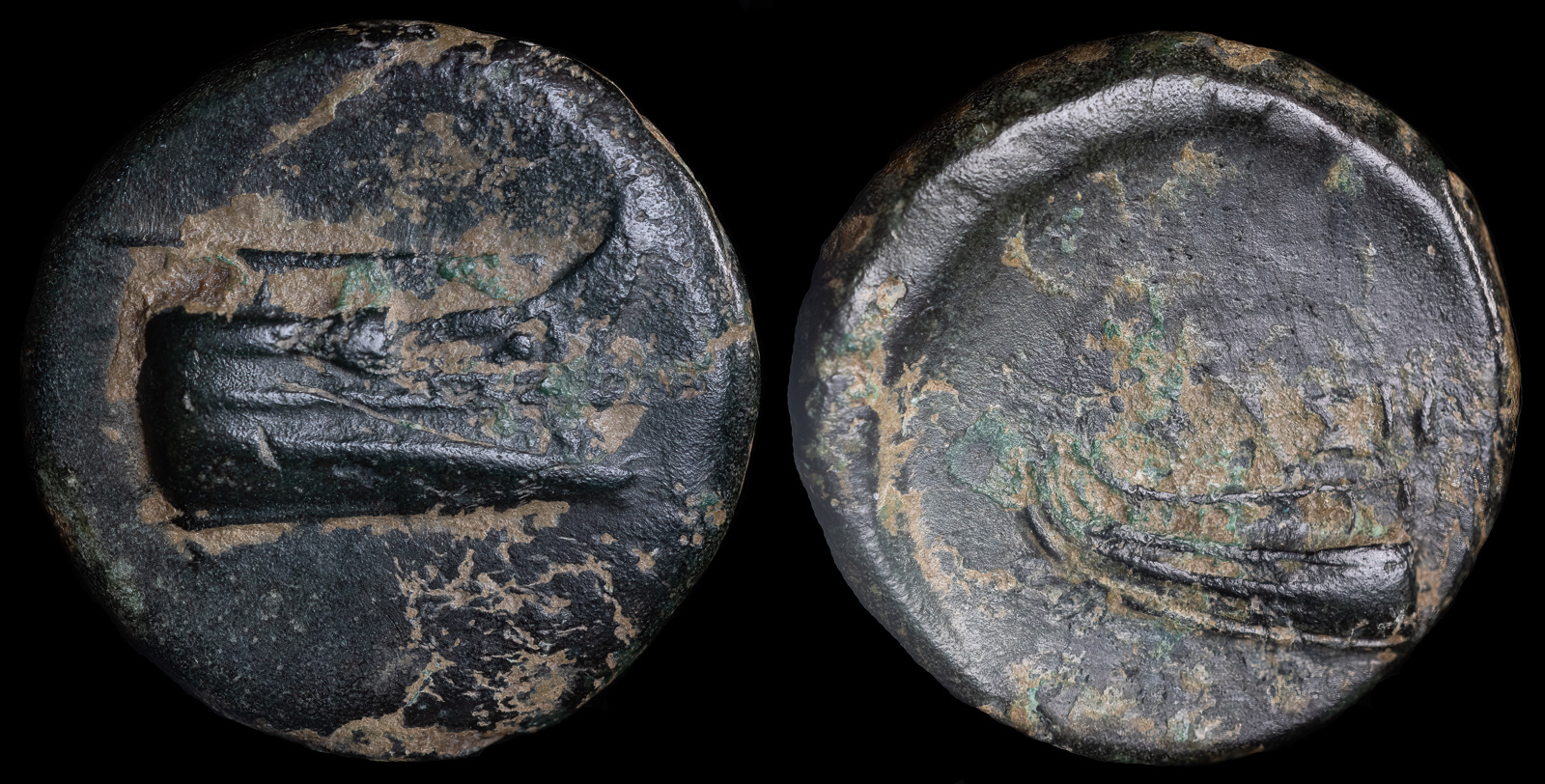Stern
View All Tags
One of the key reasons the stern was depicted on Greek coins was to highlight a city’s naval achievements. For instance, after significant naval victories, such as those during the Persian Wars, coins were struck with the image of a ship’s stern to commemorate the event and convey the glory of the city. These coins served both as a public announcement of military success and as propaganda to boost morale and civic pride.
In addition to military associations, the ship’s stern was often linked to trade and commerce, areas in which ancient Greek cities, especially those along the coast, excelled. Maritime trade was central to the Greek economy, and the stern of a ship could symbolize prosperity derived from seafaring activities.

Lycia, Phaselis
c. 250-221/0 BCE
Æ 18mm, 4.67g, 9h
Prow of galley r.
R/ Stern of galley l.
SNG Copenhagen 122